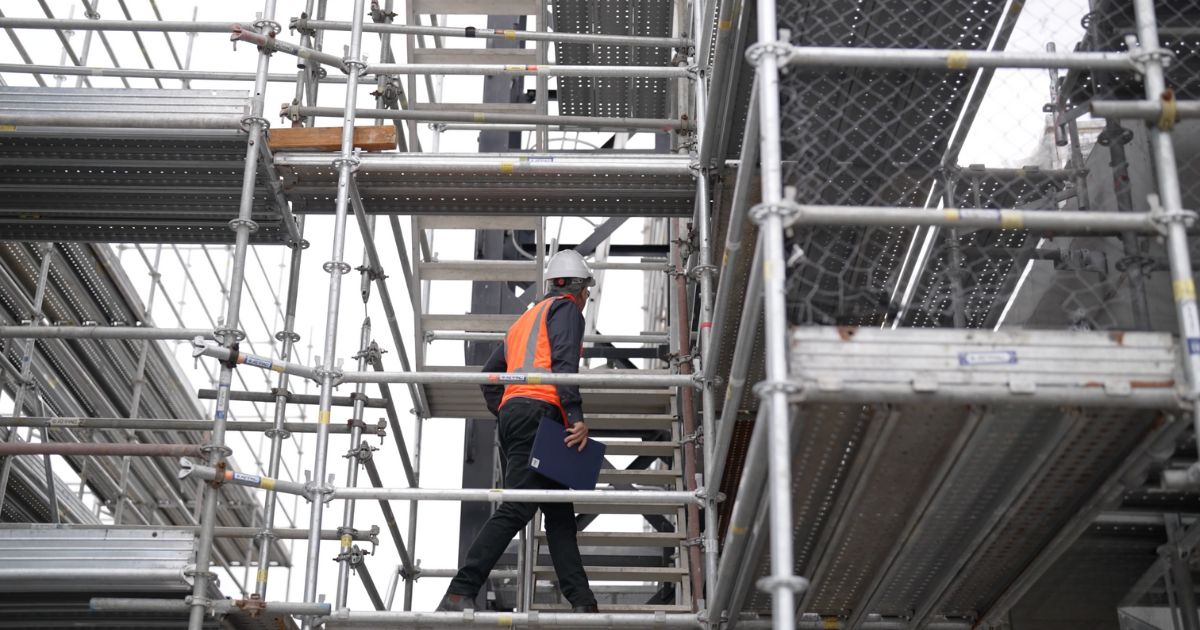June 2025
What Does a Structural Engineer Do?

June 8, 2025 | By Rise Engineers
Structural engineering is one of the most important fields within the construction and design industry. Structural engineers are responsible for ensuring that buildings and other structures are safe, stable, and capable of withstanding the forces they encounter over time.
Their work forms the foundation of any construction project, from small residential homes to large commercial developments.
The Core Role of a Structural Engineer
A structural engineer’s main responsibility in simple terms is to design and assess structures to ensure they are safe, stable, and strong.
Their work focuses on making sure that buildings can support the loads and forces they experience throughout their life span, such as:
- Gravity (the weight of the structure and its contents including live loads like people, vehicles, and furniture)
- Wind and weather impacts
- Earthquakes and ground movements
- Others forces such as impact loading
Structural engineers design the “skeleton” of a building, elements like beams, columns, slabs, and foundations, to ensure everything holds together as intended.
Typical Responsibilities
Structural engineers are involved at multiple stages of a project, from early design to final inspections. Their responsibilities include:
- Designing structural systems: Selecting the right materials and creating efficient, safe designs for the building’s framework.
- Calculating loads and forces: Ensuring every component can safely carry the stresses it will experience.
- Site inspections: Checking construction work on-site to confirm it matches the design and complies with relevant standards.
- Assessing existing structures: Diagnosing issues like cracks, movement, or deterioration, and proposing repair or strengthening solutions.
- Providing reports and Certifications: Supplying documentation for council approvals, construction, and occupancy certifications.
When Is a Structural Engineer Needed?
You typically need a structural engineer for:
- New builds (residential, commercial, or industrial/infrastructure)
- Renovations and extensions
- Building inspections and structural assessments
- Remedial and repair projects
- Fire safety upgrades that affect the building structure
- Stormwater and drainage designs involving structural elements
Essentially, any project that involves changing or supporting a building’s structure requires a structural engineer’s input.
Structural engineers play a critical role in creating buildings that are not only functional but also safe and enduring.
From the earliest design stages to project completion, they ensure that every structure stands the test of time.
At Rise Engineers, we are proud to deliver practical, efficient, and high-quality structural solutions across a wide range of projects.
If you need expert advice or support for your next project, contact Rise Engineers today.
What Are the Responsibilities of Structural Engineers During Construction?

| By Rise Engineers
When it comes to delivering a safe, stable, and code-compliant building, structural engineers not only play a critical role during the design stage, but also throughout the construction phase.
Here’s what structural engineers are responsible for during the construction process:
1. Reviewing Construction Drawings and Documentation
Before construction begins, structural engineers ensure all structural drawings and specifications are finalised, coordinated with architectural and civil plans, and aligned with relevant building codes and Australian Standards. During construction, we may also issue revised drawings or clarifications to support changes or respond to site conditions.
2. Responding to Requests for Information (RFIs)
Builders often encounter unexpected conditions on site. Structural engineers review RFIs and provide timely technical responses, helping avoid delays while ensuring any proposed solutions maintain the integrity and safety of the structure.
3. Site Inspections and Structural Certifications
Regular site visits are essential to check that construction follows the approved engineering plans. Structural engineers inspect key structural elements such as steel reinforcements, formwork, concrete pours, and load-bearing elements and issue certifications at critical stages to comply with statutory requirements.
4. Identifying and Addressing On-Site Issues
Site conditions aren’t always predictable. Structural engineers may be required to:
- Adjust designs based on unforeseen ground conditions
- Provide alternative structural solutions when materials or details are modified
- Advise on temporary works, such as propping or shoring
This ensures construction progresses smoothly while maintaining safety and compliance.
5. Coordination With Other Consultants and Stakeholders
Structural engineers work closely with architects, developers, civil engineers, builders, and certifiers to ensure structural components integrate with other building systems. Clear communication and collaboration help resolve design conflicts and streamline construction.
6. Quality Assurance and Risk Management
Engineers review the workmanship and materials used on site to ensure quality standards are met. We also assess structural risks and help implement preventive measures, particularly on complex builds or remedial projects.
7. Post-Construction Support
Even after construction wraps up, structural engineers may be involved in:
- Final inspections and certifications
- As-built documentation
- Ongoing structural monitoring (if required)
Why It Matters
A structural engineer’s input during construction isn’t just technical, it’s essential to the safety, durability, and success of your project. Whether it’s a new build, renovation, or remedial upgrade, our role goes beyond drawings, we’re on hand to ensure your structure stands the test of time.
Need experienced structural engineers for your next construction project?
At Rise Engineers, we’re committed to supporting clients through every phase of the project, ensuring the structure is built safely, efficiently, and to the highest standard.
Contact Rise Engineers today to learn how we can support your build from design through to completion.
How to Spot Early Signs of Structural Damage in Older Buildings

June 7, 2025 | By Rise Engineers
Older buildings have character and charm but they can also come with hidden structural issues. Over time, exposure to weather, foundation settlement, poor maintenance, or outdated construction methods can lead to damage that compromises safety and longevity. Spotting early signs of structural damage is crucial to addressing problems before they become costly or dangerous.
Here are some common indicators to watch for:
1. Cracks in Walls, Ceilings, or Floors
Hairline cracks are common, especially in plaster, but larger or widening cracks could signal higher risks. Pay close attention to:
- Horizontal cracks in walls
- Cracks above doors or windows
- Stepping cracks in brickwork
- Cracks that go through both internal and external walls
These may suggest foundation movement, settling, or structural stress.
2. Doors and Windows That Stick or Don’t Close Properly
If doors or windows start jamming or won’t latch, it could be more than just humidity. It might indicate a shift in the building’s frame due to foundation movement or wall deformation.
3. Sagging or Uneven Floors
Older timber floors may creak, but if you notice dips, slopes, or bouncing underfoot, it could mean:
- Joists are weakened or rotting
- Subfloor framing has shifted
- Moisture damage has affected timber integrity
4. Visible Rust or Corrosion on Structural Steel
In heritage or industrial buildings, exposed steel beams or lintels may show signs of rust. If left untreated, corrosion can reduce the load-bearing capacity of the structure and lead to structural failure over time.
5. Water Stains or Damp Patches
Persistent dampness or water ingress can cause timber rot, rust, and concrete degradation. Look for:
- Stains on ceilings or walls
- Peeling paint or bubbling plaster
- Musty odours or mould growth
Water damage is a major contributor to long-term structural problems if not addressed quickly.
6. Bulging or Leaning Walls
A bulging brick wall or a leaning façade may indicate structural movement, foundation problems, or deterioration of supporting materials. This is especially important in retaining walls or masonry façades of older buildings.
7. Roofline Irregularities
Sagging rooflines, dips in ridge tiles, or visibly deformed roof structures can be a sign of timber failure, heavy water damage, or foundation shifts. These issues often lead to further internal and external problems.
What to Do If You Notice These Signs
If you notice any of the above warning signs, it’s best to consult a qualified structural engineer for an assessment. At Rise Engineers, we provide expert inspections, reports, and structural solutions for older buildings, helping you maintain safety, compliance, and peace of mind.
Catching structural damage early can prevent costly repairs and keep occupants safe. Regular inspections and proactive maintenance are key to preserving older buildings.
Need help assessing an older property?
Contact Rise Engineers today for a professional structural assessment and practical solutions.